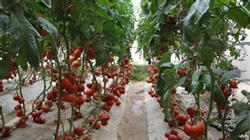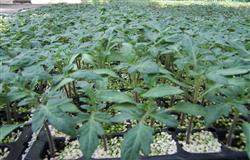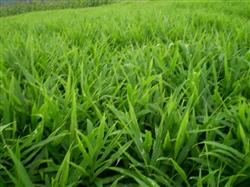Planting over-summer tomato with "two nets and one film"

In recent years, with the rapid development of protected area, the production of vegetables in winter has basically met the needs of the market, on the contrary, the production of high-grade vegetables in summer has appeared faults. Since 2001, our county has adopted the technology of "two nets and one film" to carry out the summer cultivation experiment of tomato in greenhouse. The demonstration has been successful, and the benefit is remarkable. The yield of hard fruit tomato can reach 5000kg to 8000kg per mu. First, the cultivation facilities make use of the existing solar greenhouse (there must be an air vent on the back wall), greenhouse and other facilities, using two nets and one film to cover cultivation (that is, the scaffolding is covered with plastic film, the film is covered with sunshade net, and the tuyere is covered with anti-insect net). Create a fully closed and safe production environment. Special shed construction: the east-west direction of the shed, the span is 10 to 16 meters, the length is more than 50 meters, the height is 2.5 to 3 meters, and the area is about 1 mu. Second, the function of two nets and one membrane 1. Save cost and increase efficiency, easy to popularize. The service life is long (3 ~ 5 years), the application of stubble is many times, the depreciation cost is low, and the cost of medication, watering and fertilization is reduced. 2. Improve the growing environment of vegetables and reduce the harm of disastrous climate. The disastrous climate such as strong light, high temperature, rainstorm, strong wind and drought in summer often lead to a reduction in vegetable production in summer and autumn, resulting in a shortage of vegetables in the off-season. After adopting the technology of "two nets and one film", the soil temperature of the border decreased by 50.7 ℃, the air temperature in the shed decreased by 30.4 ℃, and the light intensity decreased by 30% to 50%, which prevented the heat damage of high temperature, avoided the direct impact of rainstorm on the soil surface, preserved soil moisture, regulated air temperature, prevented drought, improved the rhizosphere environment, and promoted germination and seedling accumulation. 3. Avoid insects and prevent diseases. Pests could not enter the shed, which put an end to the occurrence of pests from the source and reduced the pollution of chemical pesticides to vegetables. 4. increase production and increase value, and the benefit is remarkable. Generally increase production by 20% to 50%, make early autumn vegetables on the market 10-30 days ahead of schedule, and increase tomato income by 2000-3000 yuan per mu. 5. Improve product quality. First, the amount of pesticide is reduced; second, the content of crude fiber is reduced, and the quality of vegetables is improved; third, the appearance is fresh and tender, and the commodity performance is improved. 3. Variety selection in the production of over-summer tomato, because the flowering and fruiting period of tomato is in the hot and rainy season, the excellent varieties with high resistance to virus disease, heat resistance, storage and transportation, non-cracking fruit and good quality have been cultivated in recent years. Baili, Gray, lark, Katarina and so on. 4. Cultivation stubble 1. Spring and summer cultivation: cultivation in greenhouse can be planted at the end of March and early April, picking at the beginning of June, the harvest peak can be reached in July, and can be received continuously at the end of October. 2. Summer and autumn cultivation: after the greenhouse cucumber is harvested in May, do not remove the film planting tomato, pick from the end of July to the beginning of August, and form the yield peak from the end of August to the beginning of September.
- Prev

How to raise Tomato seedlings in Autumn and Winter
1. Seedling bed preparation: the seedling period of tomato in autumn and winter in solar greenhouse is in the high temperature and rainy season. the seedling bed should have the conditions of anti-rain and waterlogging, ventilation and cooling, and the seedlings must be covered with film before the seedlings can adapt to the greenhouse conditions. It is best to choose a dry, well-ventilated area with an arch 1.5 to 2 meters high.
- Next

Technical guidelines for fertilization in the whole process of planting ginger
Ginger is an indispensable vegetable variety in daily life. Since this year, the supply is in short supply, the price is on the high side, and the benefit is better. 1. Parcel selection. Ginger is not suitable for continuous cropping, but should be rotated with rice, cruciferous vegetables and legumes. Ginger has a long growing period and is not tolerant to strong light, so it can be used as spring sowing crops or vegetables in the early stage and in the later stage.
Related
- Where is it suitable to grow horseradish in China? it is expected to see the middle altitude horseradish in Alishan.
- How to prevent tomato virus disease reasonably? (Control methods included)
- Many people like to plant towel gourd on the balcony. What are the main points of this method and management?
- What crops can chili peppers be mixed with?
- Fertilization techniques and matters needing attention in Tomato
- What are the grafting techniques for peach seedlings in spring?
- Harm and control methods of root swelling disease of Chinese cabbage
- What are the pests of sweet potatoes? How to prevent and cure it?
- Symptoms, causes and Control methods of navel Rot in Tomato
- The cause of "Cucumber rotten bibcock" in Farmers' planting Cucumber and its Control Plan

